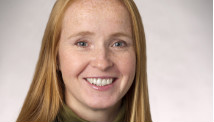LOS ANGELES (TheWrap.com) – “Zero Dark Thirty” landed this week in the United Kingdom, where the Kathryn Bigelow drama continued to stir debate over its depiction of the use of torture in the CIA’s decade-long hunt for Osama bin Laden.
As they have in the U.S., some critics accused the filmmakers of implying that enhanced interrogation techniques could be a useful form of intelligence gathering, while others believed that Bigelow and screenwriter Mark Boal were more ambiguous in their portrayal of torture’s efficacy.
Most reviewers were floored by the propulsive storyline, the performance of star Jessica Chastain and the gripping dramatization of the raid on bin Laden’s compound in Pakistan.
In the Evening Standard, David Sexton argues that the film is ambivalent about waterboarding and other brutal methods, noting that a key piece of information is only discovered after interrogators ply a detainee with food and kindness.
“This has proved offensive to those who, to avoid having to accept there may be negative consequences from taking the moral high ground, prefer to believe that torture must always be ineffective as well as wrong,” Sexton writes. “Some of these critics – most notably nitwit Naomi Wolf, who has tastefully compared Bigelow to Leni Riefensthal and dubbed her ‘torture’s handmaiden’ – have claimed the film’s disturbing representation of torture amounts to a blithe commendation of the practice, not really a possible interpretation for those who have actually seen the movie.”
In a four-star review, Sexton went on to hail “Zero Dark Thirty” as “terrifically good” and said the depiction of the raid was a “masterclass in action filmmaking.”
In The Independent, Anthony Quinn praised the film for avoiding simplistic conclusions about America’s controversial interrogation methods.
“The waterboarding, the beatings, the dog collars, all the stuff you’ve heard about is here, and perhaps some you haven’t – the spectacle of a man being forced inside a small wooden box is as harrowing as any,” Quinn writes. “Is this an abhorrent crime? Would the information be impossible to gain by other means? The film isn’t saying either way; it is asking us to make up our own minds.”
Quinn also argued that the film is more effective because it was directed by a woman and that because of her gender, Bigelow has a less “gung-ho” relationship to violence than a Ridley Scott or Michael Mann might bring to the same material (he may not have seen “Point Break”)
Robbie Collins maintains in his review of the film in the Telegraph that Bigelow and Boal leave it to audiences to decide whether torture is right or wrong.
“These scenes are every bit as hellish to watch as they should be, and Bigelow’s genius is to make them feel at once gratuitous and necessary,” Collins writes.
He also praised the film for eschewing jingoism and for having the courage to end on a deflated note.
“Where, then, does Zero Dark Thirty leave us?” Collins asks.
“In the same place it leaves Maya: with our thirst for justice quenched, but our sense of rightness shaken. “Where do you want to go?” a pilot asks her, and she starts shedding tear after tear. This, finally, is what victory looks like, and its likeness to defeat is terrifying.”
Peter Bradshaw of The Guardian was more unsettled by the film’s relationship with torture and seemed to wish it had taken a firmer position.
“There is nothing in Zero Dark Thirty comparable to Gavin Hood’s soul-searching 2007 movie, Rendition, in which Jake Gyllenhaal’s CIA agent denounces waterboarding information as valueless; he quotes Shakespeare’s The Merchant of Venice and says torture victims ‘speak upon the rack,/ Where men enforced do speak anything,’” Bradshaw writes. “I can well believe that, but for me the most sinister depiction of torture is non-depiction. Many Hollywood movies about the war on terror have managed to ignore the subject, implying non-existence. Despite its fence-sitting, I prefer Bigelow’s account.”
Bradshaw was also less enamored of the film on an artistic level, writing that “It is well made, with a relentless, dour drumbeat of tension and a great final sequence, but nowhere near as good as the first season of Homeland.”
Empire Magazine’s Kim Newman mostly skirted the political debate surrounding “Zero Dark Thirty,” but was ecstatic about Bigelow’s directing, the film’s pacing and star turns.
“Like Bigelow’s The Hurt Locker, it’s a relatively new kind of American patriotic war movie, counterprogramming jaded paranoid fantasies like the Bourne movies or the liberal horror stories (Redacted, Rendition, In The Valley Of Elah, Green Zone etc.) thrown up by the War On Terror,” Newman writes. “It’s measured, seething with suppressed emotion, unafraid of slow stretches and false trails, snapping shut like a mantrap when blood is shed. If it grips in a more intellectual, journalistic manner than its Oscar-winning predecessor, it’s because Chastain’s character is necessarily absent during the climax – though she has a terrific post-traumatic outburst when the case is closed.”
Movies News Headlines – Yahoo! News

